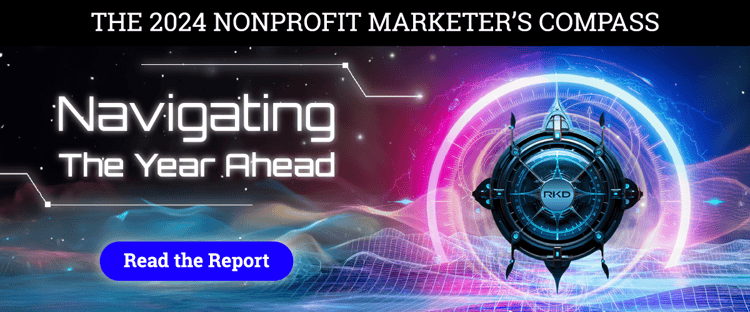The landscape of nonprofit fundraising is currently undergoing a radical transformation. You may not see it in your day-to-day work, but I bet you can feel it.
An erosion of trust. Raised expectations from donors. Digital, data and AI everywhere.
At the heart of this evolution is the slow-but-steady overhaul of our traditional donor bases as the largest generation in our country’s history moves into retirement and old age. These changes demand a shift in how we think about fundraising.
As new waves of donors reach their prime giving years and current donors evolve their behaviors, we cannot simply rest upon traditional approaches. We cannot ruminate over their waning engagement. We must realize the need to treat them differently.
So, let’s talk about how we, as a sector, can do better.
Acknowledging the problem
They say the first step to fixing a problem is acknowledging you have one. I’ve made my confession to the nonprofit community, and I’m fully committed to this change.
But how do we address these challenges that seem so large and daunting? Let’s break it down item by item, starting with the decline of donor participation.
In the past, nonprofit organizations used mass communication strategies to reach a vast sea of contributors. Want more donors? Send more mail. Need more revenue? Just keep asking. As we’ve seen in the last few years, we’ve gone to the well too many times, and it’s starting to dry up.
A related issue is the decline of trust in nonprofit organizations. The Edelman report in 2023 showed us that trust in nonprofit organizations had fallen below for-profit businesses. And people won’t give to charities they don’t trust. It makes sense, and our donor research confirmed it as well.
Another key aspect is that today’s donors—who are also consumers—have raised expectations on what they expect in communications. We call them “liquid” expectations.
Commercial businesses have raised the bar on relevance and convenience in experiences, and people expect similar experiences as they swipe from one app or page to another. Donors know their data is being collected and used in these experiences. We have all given up a portion of privacy for the value of convenience.
If we connect the dots in these challenges, it’s clear that there’s a disconnect between what people want and what nonprofit organizations are delivering.
But we don’t have to settle for managing the decline with degrading “best” practices. We need to catch up and meet donors where they are. We need to shift our thinking.
Thinking differently about fundraising
We must shift to meet donors’ needs and adapt to their level of commitment. Some donors want a deeper, more meaningful connection. Others want to make a gift, feel the connected happiness boost and move on with their busy lives.
Central to this shift is the embrace of a “human strategy.” We’ve all heard the term “donor-centric” for years, but this is more than just multichannel integration. We must pivot our focus on channel-based metrics to a more human-centered approach.
Think about our current mindset in fundraising. We start by picking a channel, then we say, “We need to send a campaign.” Once that’s determined, we look at the offer and then choose the audience that receives it.
This is completely backward from what we should be doing.
In a human strategy, we start with the donors. We ask, “Who do we want to have a relationship with?” Then, we consider the offer and how they’d like to support our cause. At the end, we determine their communication preferences for both receiving and responding.
The journey is personalized to the donors’ preferences and behaviors. And that journey must be able to adapt and change, which requires a commitment to testing, learning and optimizing.
Walking the path of progress
These shifts in thinking deliver a much better experience for the donor—they’re not easy, but there is a clear path.
Solving the challenge requires more than PowerPoint innovation or using buzzwords words like “AI” and “third-party data.” We must make consistent progress in understanding our donors, predicting their actions, tailoring our creative to be relevant and constructing the infrastructure to enable these relevant experiences.
We can’t afford to view these complex tools merely as conveniences anymore. They are essential components for understanding and connecting with donors more effectively today.
It’s a lot of work, but we cannot be stuck in the complexity of a perfect future. We need to envision that future and take the first, small steps down the path to achieve it.
The good news is that commercial brands have already paved the paths of success (and failure) in meeting human needs. As nonprofit leaders, we get the opportunity to select the roads that make the most sense for our donors and our organizations versus having to plow new paths on our own.
Nonprofit fundraising stands at a crossroads where embracing change, challenging traditional methods and adopting new thinking are necessities. Our post-pandemic era demands a paradigm shift—a more human-centric, data-driven and forward-thinking approach that aligns with the dynamic landscape of donor engagement and expectations.
I’m ready for the challenge. Are you?






Leave a comment: